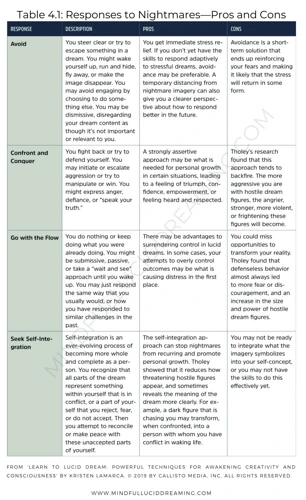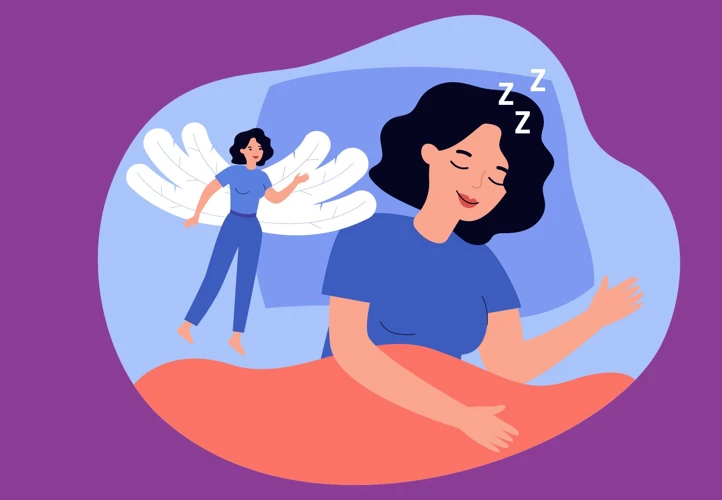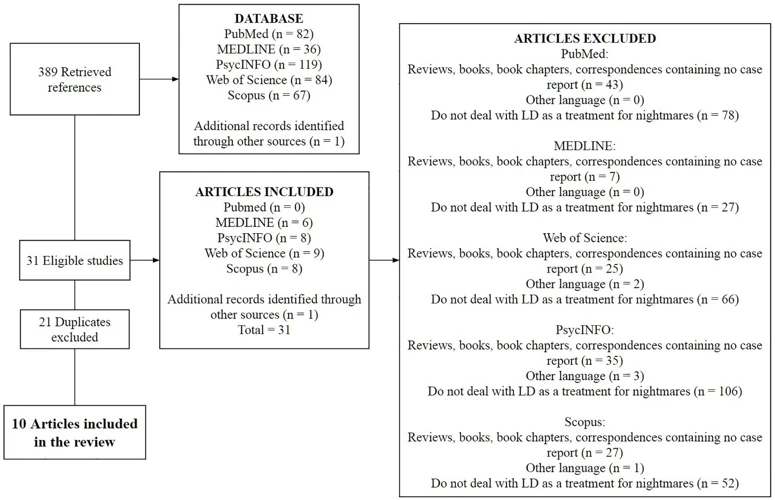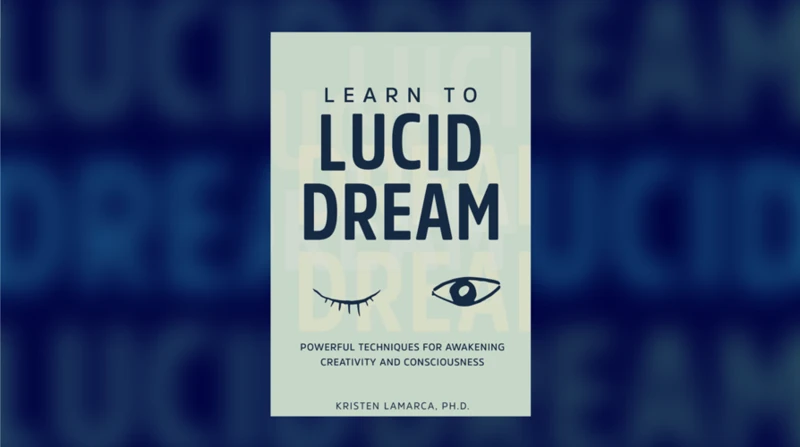As we drift off into dreamland, we expect to be transported to a world of wonder and relaxation. However, for some, this is far from reality. Nightmares, which are intense and frightening dreams, can disrupt our sleep and leave us feeling anxious and unsettled well into the day. Luckily, there is hope. Using lucid dreaming techniques can help us take control of our dreams and turn them into positive experiences. Let’s take a closer look at how we can use lucid dreaming to overcome nightmares.
Contents
- Understanding Nightmares
- What is Lucid Dreaming?
- How Lucid Dreaming Can Help Overcome Nightmares
- Lucid Dreaming Techniques to Overcome Nightmares
- Best Practices to Prevent Nightmares
- Lifestyle Changes that Help Prevent Nightmares
- When to Seek Professional Help?
- Conclusion
-
Frequently Asked Questions
- Can lucid dreaming be dangerous?
- How long does it take to learn lucid dreaming?
- Can lucid dreaming help with other sleep disorders?
- Is it possible to have a lucid dream every night?
- Can lucid dreaming cure depression or anxiety?
- Is lucid dreaming only possible during REM sleep?
- Can lucid dreaming be a substitute for therapy?
- Can lucid dreaming cause sleep paralysis?
- Can anyone learn to lucid dream?
- Are there any negative side effects of lucid dreaming?
- References
Understanding Nightmares

Nightmares are unsettling experiences that can leave us feeling scared and unsure. We often wake up feeling disturbed, with vivid images and emotions still fresh in our minds. Understanding nightmares is important to help identify the causes and prevent them from recurring. By exploring what nightmares are and what triggers them, we can take steps to overcome them and get a peaceful night’s sleep. Let’s delve deeper into this mysterious and often perplexing world of nightmares.
What are nightmares?
Nightmares are intense and vivid dreams that evoke feelings of fear, terror, and anxiety. They usually occur during the rapid eye movement (REM) sleep stage, which is the phase of sleep where we experience most of our dreams. Nightmares can be quite distressing and may lead to sleep disturbances, difficulty falling asleep, and even insomnia.
Here’s a table summarizing some of the key characteristics and factors associated with nightmares:
| Characteristics | Factors Associated with Nightmares |
| Nightmares are vivid and intense dreams that evoke negative emotions. |
|
| Nightmares often involve themes or scenarios that are threatening or frightening. |
|
| Nightmares can cause sleep disturbances and may lead to sleep-related problems. |
|
It’s important to note that occasional nightmares are a normal part of the dreaming process and aren’t necessarily a cause for concern. However, when nightmares become frequent or interfere with daily functioning, it may be helpful to seek support from a healthcare professional. In the next section, we will explore the various causes of nightmares.
What causes nightmares?
Nightmares can be horrifying and stressful, and the causes behind them can be complex. There are different factors that can contribute to having nightmares, and understanding these factors can help in preventing or dealing with them.
Here are some of the common causes of nightmares:
| Stressful life events | Experiencing stressful life events such as a job loss, a breakup, a divorce, or a death of a loved one can cause nightmares. These events can lead to emotional distress and anxiety, which can affect our dreams. |
| Trauma | Trauma can have a lasting effect on our mental health and can cause nightmares. People who have experienced traumatic events such as physical or sexual abuse, or accidents, may have nightmares related to their experiences. |
| Medications | Some medications used to treat medical conditions such as depression, anxiety, and high blood pressure can cause nightmares. If you are experiencing nightmares as a side effect of medication, it is important to speak with your doctor. |
| Substance use | Alcohol and drugs can have an impact on our dreams, and can cause vivid, frightening nightmares. Substance use can also disrupt our sleep patterns, which can contribute to having nightmares. |
| Sleep disorders | Sleep disorders such as sleep apnea, restless leg syndrome, and narcolepsy can cause nightmares. These disorders can affect the quality of our sleep, leading to nightmares or disturbed dreams. |
| Mental health conditions | Mental health conditions such as anxiety, depression, and post-traumatic stress disorder (PTSD) can cause nightmares. These conditions can affect our mood and behaviours, leading to nightmares or vivid dreams. |
It is essential to identify the cause of your nightmares, as addressing the underlying issue can help in preventing or reducing their frequency. Seeking help from a health-care professional can be an important step in dealing with nightmares.
What is Lucid Dreaming?

Have you ever had a dream where you realized you were dreaming? Suddenly, you were in control of the dream world around you, able to fly or talk to people who were no longer present in your real life. This phenomenon is called lucid dreaming, and it can be a powerful tool for overcoming nightmares. Lucid dreaming allows you to confront and overcome your fears in a safe, controlled environment while also providing a sense of empowerment and control. But what exactly is lucid dreaming? Let’s take a closer look.
What is a lucid dream?
A **lucid dream** is a type of dream where the dreamer is aware that they are dreaming. In other words, during a lucid dream, the dreamer has some control over the dream and can actively participate in it. During a lucid dream, the dreamer is able to differentiate between the dream world and the real world.
| **Characteristics of a Lucid Dream** |
|—————|
|**Awareness**| The dreamer is aware that they are dreaming. |
|**Control**| The dreamer has some control over the dream. |
|**Participation**| The dreamer can actively participate in the dream. |
|**Differentiation**| The dreamer can differentiate between the dream world and the real world. |
It is important to note that not all dreams are lucid dreams. It takes practice and effort to increase the likelihood of having a lucid dream. During lucid dreaming, the dreamer can explore their subconscious mind and face the fears that cause nightmares in a safe and controlled environment.
How to know if you had a Lucid Dream?
One of the most significant aspects of lucid dreaming is being able to recognize that you are dreaming. It can be challenging to differentiate between a regular dream and a lucid dream, but there are a few characteristics that can help you to identify when you are having a lucid dream. Here are some signs that suggest you are in a lucid dream:
- Reality testing: One of the most effective ways to recognize a lucid dream is by doing reality checks. A reality check is a technique that helps distinguish between the waking world and a dream. For example, try pushing your finger through your palm or trying to read the text on a sign. In a lucid dream, these tests will produce unusual results, and you’ll realize you’re dreaming.
- Awareness of surroundings: Although dreams can be vivid, the details of the surrounding environment can be inconsistent, blurry, or change entirely. In a lucid dream, your awareness of your surroundings is more apparent and stable, allowing you to recognize that you are in a dream.
- Ability to control the dream: Lucid dreaming gives you the ability to control and manipulate the dream, so if you find yourself shifting the dream’s narrative or changing the scenery, you are most likely having a lucid dream.
- Clarity of thought: Compared to a regular dream, lucid dreams feel more vivid and real. The clarity of the dream will stand out to you, and you’ll have a sense of being in control, even if it’s only partially.
Recognizing a lucid dream can take time and practice. However, the more you engage in lucid dreaming and practice reality checks, the easier it will be to identify whether you are in a dream state or not.
How Lucid Dreaming Can Help Overcome Nightmares

Lucid dreaming has gained popularity as a technique to overcome nightmares. Many people are intrigued by the idea of taking control of their dreams and turning them into a positive experience. But how exactly can lucid dreaming help overcome nightmares? Let’s delve into the science behind how lucid dreaming works and the benefits it provides. We will also explore the techniques that can help you achieve lucid dreaming and reduce the occurrence of nightmares.
How does lucid dreaming work to overcome nightmares?
Lucid dreaming can be a powerful tool to overcome nightmares as it allows individuals to take control of their dreams and manipulate their subconscious. By recognizing that you are dreaming, you are able to transform the negative and fearful elements of your dream into positive and empowering ones.
Through the practice of lucid dreaming, individuals can learn to confront their fears and anxieties in a safe and controlled environment. They can challenge the negative thoughts and emotions that might be causing the nightmares, ultimately reducing their power and influence on the individual’s mental state.
In addition, lucid dreaming allows individuals to practice healthy coping mechanisms and problem-solving skills. This means that when they experience similar fears and anxieties in their waking life, they are better equipped to handle them in a more positive and constructive manner.
Overall, lucid dreaming works to overcome nightmares by allowing individuals to take control of their dreams, challenge their fears, and practice healthy coping mechanisms. With consistent practice, individuals can reduce the frequency and intensity of their nightmares, leading to better mental health and overall well-being.
Benefits of using lucid dreaming to overcome nightmares.
Lucid dreaming can be an effective method for overcoming nightmares, and here are some of its benefits:
- Empowerment: Lucid dreaming enables individuals to take control of their dreams and their subconscious mind.
- Reduction in anxiety: By becoming aware that you are in a dream, you can begin to address and work through your fears and anxieties without the real-life consequences.
- Better quality sleep: Frequent nightmares can cause poor sleep quality, while lucid dreaming can help individuals get a better night’s sleep and wake up feeling rested and refreshed.
- Increased self-awareness: By practicing lucid dreaming to overcome nightmares, individuals can gain greater insight into their own thoughts, emotions, and behaviors.
- Improved mental health: Overcoming recurring nightmares through lucid dreaming can boost an individual’s confidence, self-esteem, and overall mental well-being.
- A life-changing experience: Many people who successfully use lucid dreaming techniques to overcome nightmares report that it helps them change their outlook on life, and they become more positive and self-assured.
The benefits of lucid dreaming for overcoming nightmares are numerous, and this technique can be a life-changing experience for those who persist with it.
Lucid Dreaming Techniques to Overcome Nightmares

If you are someone who suffers from frequent nightmares, then lucid dreaming techniques could be the key to overcoming them. By taking control of your dreams and transforming the nightmare into a more positive experience, you can reduce the fear and anxiety associated with these disturbing dreams. In this section, we will explore the various techniques you can use to induce lucid dreams and use them to overcome nightmares. By incorporating these techniques into your bedtime routine, you can learn to take control of your dreams and overcome fears that have been holding you back.
Maintain a dream journal
One effective technique to overcome nightmares through lucid dreaming is maintaining a dream journal. This involves making it a habit to record your dreams as soon as you wake up. When you write down your dreams, include as many details as possible. You can use bullet points or create a numbered list to organize your thoughts better.
Here are some tips to help you maintain a dream journal:
- Keep a notebook and pen beside your bed, so you can write down your dreams as soon as you wake up.
- Write down even the smallest details of your dream, including the colors, sounds, and emotions you experienced
- Try to record your dreams every day, even if you don’t remember much at first. Over time, you’ll start to remember more and more details.
- Review your dream journal regularly to look for patterns, symbols, or themes. It can sometimes help you identify what triggers your nightmares so you can take steps to avoid them.
- Use your dream journal as a tool to help you recognize when you’re dreaming. This awareness can help you become more lucid in your dreams and take control of them.
By keeping a dream journal, you’ll be more aware of your dreams and can use this information to help you become lucid and overcome your nightmares. It may take some time and effort to get into the habit of maintaining a dream journal, but it can be a valuable tool in your journey towards better sleep and less frightening dreams.
Use Reality Checks
Reality checks are a key technique used in lucid dreaming to help distinguish between dreams and reality. By performing simple tests during waking hours, individuals can train themselves to recognize when they are dreaming and become lucid within their dream. Here are some popular reality checks you can try:
| Reality Check | Description |
|---|---|
| Count your fingers | During waking hours, count the number of fingers on your hand. When dreaming, this number may appear distorted, with more or less than five fingers on each hand. |
| Look at a clock | Check the time on a clock during waking hours. When dreaming, the numbers on the clock may appear jumbled or distorted, making it difficult to read the time. |
| Try to push your hand through a solid object | During waking hours, try pushing your hand through a solid object like a wall or table. When dreaming, this may be possible, as the dream is not bound by the rules of the physical world. |
| Pinch your nose and try to breathe | During waking hours, pinch your nose closed and try to breathe through it. When dreaming, you may still be able to breathe through your nose despite having it pinched shut. |
It is important to perform these reality checks regularly throughout the day, even if you do not suspect you are dreaming. This way, your brain will become accustomed to the process and you will be more likely to perform a reality check while dreaming. Using these reality checks in combination with keeping a dream journal and practicing lucid dreaming techniques can greatly increase the likelihood of having a lucid dream and overcoming nightmares.
Try the MILD Technique
One effective technique for inducing lucid dreaming is the Mnemonic Induction of Lucid Dreams (MILD) technique. This technique involves setting an intention to recognize when you are in a dream and to become lucid.
Here are the steps:
- Before sleeping, write down a dream that you have had previously in your dream journal.
- Choose a phrase that you will repeat to yourself as you fall asleep, such as “Next time I’m dreaming, I will remember that I’m dreaming”.
- Repeat the chosen phrase to yourself as you fall asleep, visualizing yourself becoming aware that you are in a dream.
- When you wake up, try to recall any dreams that you had and write them down in your dream journal.
- Repeat the same phrase and visualization as you fall asleep again.
- Continuously repeat the phrase and visualize yourself becoming lucid in a dream until you fall asleep.
The MILD technique is effective because it sets a clear intention to become lucid in a dream and reinforces that intention through repetition. By writing down a dream in your journal and recalling it before falling asleep, you are also training your brain to pay closer attention to your dreams, making it easier to recognize when you are in a dream.
WILD Technique
One powerful technique for inducing lucid dreams is the WILD technique or Wake-Induced Lucid Dreaming technique. This technique involves transitioning from being conscious to entering directly into a lucid dream state.
To begin, lie down comfortably in your bed and close your eyes. Focus your mind on your intention to have a lucid dream. Slowly breathe in and out and relax your body.
Step 1: Allow yourself to fall asleep, but try to keep your mind awake by focusing on your breathing or visualizing an object in your mind.
Step 2: As you drift off, pay attention to any hypnagogic imagery or sounds that you may experience. These are sensory experiences that occur as you fall asleep and can range from simple colors and shapes to complex scenes.
Step 3: Try to maintain a sense of awareness as you transition from being awake to being in a dream state. Some people find it helpful to visualize themselves entering into a dream scene, while others prefer to focus on their bodily sensations.
Step 4: Once you are fully immersed in the dream state, perform a reality check to confirm that you are in fact dreaming. This will help you to gain control over the dream and become lucid.
The WILD technique can require some practice, patience, and persistence. It can also take time to master the art of maintaining a balance between consciousness and sleep. But with practice, some individuals have reported experiencing incredibly vivid and memorable lucid dreams using this technique.
Best Practices to Prevent Nightmares

If you’re someone who suffers from frequent nightmares, taking steps to prevent them from occurring can be incredibly helpful. While nightmares can be caused by a variety of factors, certain best practices can help reduce the likelihood of experiencing them. By following these tips, you can create a more peaceful sleeping environment and improve your overall sleep quality, ultimately leading to fewer nightmares. Here are some effective practices that you can implement into your nighttime routine to help prevent nightmares.
Establish a Nighttime Routine
Establishing a nighttime routine can significantly reduce the risk of experiencing nightmares. Here are some helpful tips to create a soothing and calming routine before bedtime:
- Create a consistent bedtime: Try to go to bed and wake up at the same time every day. This helps to regulate your body’s circadian rhythm.
- Relaxing activities: Engage in activities that help you relax, such as reading a book, taking a warm bath, or listening to calming music.
- Avoid electronics: Turn off electronic devices an hour before bedtime to reduce stimulation and allow your mind to relax.
- Avoid stimulating substances: Avoid consuming caffeine or alcohol before bedtime as it can disrupt your sleep.
- Positive affirmations: Repeat positive affirmations to yourself before sleep, such as “I am safe and peaceful”, to promote positive thoughts and reduce anxiety.
By establishing a consistent nighttime routine, you are telling your body that it’s time to wind down and sleep. This can reduce the likelihood of experiencing nightmares and promote a more restful sleep.
Make changes to your sleeping environment
Creating a peaceful sleeping environment can help prevent nightmares. Here are some changes you can make to your sleeping environment:
- Remove stimulating objects: Keep your phone, laptop, or any other stimulating objects away from your bedside. The blue light emitted by these devices can interfere with your sleep and trigger nightmares.
- Use comfortable bedding: Use comfortable and clean bedding. Comfortable bedding can provide you a relaxing and comfortable sleep, which can help prevent nightmares.
- Adjust the temperature: Ensure the temperature of your sleeping environment is comfortable for you. An excessively hot or cold temperature can cause discomfort and possibly cause nightmares.
- Dim the lights: The brightness of your bedroom can impact your sleeping patterns. Using soft, dim lights can help you fall asleep and stay asleep peacefully without any unwanted disturbances that could cause nightmares.
- Avoid clutter: Keep your sleeping environment clean and avoid unnecessary clutter that could disrupt your sleep. A messy bedroom can cause anxiety and contribute to nightmares.
- Use calming scents: Some scents like lavender and jasmine can help promote relaxation and reduce anxiety. Using essential oils or candles with these scents can create a peaceful sleeping environment.
By making these changes, you can create a more peaceful sleeping environment that is conducive to restful sleep, which in turn can help prevent nightmares.
Reduce stress levels
Stress is one of the major culprits behind recurring nightmares. If left unchecked, stress can wreak havoc on our mental and physical health. It’s important to take proactive measures to reduce stress levels. Here are some effective techniques to reduce stress:
- Practice Mindfulness: Mindfulness is a powerful stress-reduction technique that can help you stay grounded in the present moment. Mindfulness meditation involves paying attention to your breath and bodily sensations without judgment. By practicing mindfulness regularly, you can train your mind to be more focused and less reactive to stressors.
- Engage in Relaxation Techniques: Participating in relaxation techniques such as deep breathing, progressive muscle relaxation, and guided imagery can help you relax your mind and body. These techniques can help reduce anxiety, lower blood pressure, and promote a sense of calm.
- Engage in Physical Activity: Regular exercise is a great way to reduce stress levels. Exercise can help reduce the levels of stress hormones in your body while triggering the release of endorphins, which can elevate your mood and increase feelings of well-being. Engaging in physical activities such as yoga, running, or walking can be particularly beneficial for reducing stress levels.
- Get Adequate Rest: Sleep is essential for physical and mental health. If you aren’t getting enough sleep, you may be exacerbating your stress levels. Aim for 7-8 hours of sleep per night and establish a consistent bedtime routine. Avoid looking at screens or engaging in stimulating activities before sleep, as this can interfere with your ability to relax.
- Establish Boundaries: Setting boundaries is an important aspect of reducing stress levels. Learn to say no when you need to, establish healthy relationships with others, and prioritize your own needs. By taking ownership of your own life, you can reduce your exposure to stressful situations and promote your overall well-being.
By adopting these techniques, you can reduce your stress levels and improve your overall quality of life. Remember, reducing stress is an ongoing process, so be patient and compassionate with yourself as you work toward a more peaceful state of being.
Lifestyle Changes that Help Prevent Nightmares

If you’re struggling with frequent nightmares, making certain lifestyle changes can be extremely helpful in preventing them. These changes include altering your habits and routines to promote relaxation, cutting down on substance consumption, implementing regular exercise, and practicing meditation techniques. Let’s take a closer look at each of these lifestyle changes and how they can help to prevent nightmares.
Cut down on substance consumption
Reducing substance consumption is a crucial step in preventing nightmares. Substances such as alcohol and drugs can negatively impact the quality of sleep and increase the likelihood of having nightmares. If you consume these substances regularly, it’s important to take steps to cut down or quit altogether. Here are some tips for cutting down on substance consumption:
- Set realistic goals: It’s important to be realistic about your goals when cutting down on substance use. Going cold turkey may not be feasible for everyone. Gradually reducing your intake over a period of time can be a more manageable approach.
- Get support: It’s essential to have a support system in place to help you through the process of reducing substance use. Trusted friends and family members can be an excellent source of support. Additionally, seeking professional help from a therapist or counselor can provide you with the tools necessary to overcome substance use.
- Find alternative activities: Finding new activities to replace substance use can be a helpful way to stay on track. Engage in hobbies or exercise, or find ways to socialize without alcohol or drugs.
- Avoid triggers: Identify any triggers that lead to substance use and avoid them. These triggers can be situational, such as going to a bar or party, or emotional, such as stress or anxiety. By learning to avoid these triggers, you can reduce the likelihood of relapse.
- Celebrate small successes: Celebrating small successes along the way can be an effective way to stay motivated. For example, if you go a week without using substances, reward yourself with something you enjoy.
By cutting down on substance consumption, you can improve the quality of your sleep and reduce the likelihood of experiencing nightmares. If you’re struggling to cut down or quit, seek professional help to guide you through the process.
Regular Exercise
One lifestyle change that has been proven to be effective in reducing the occurrence of nightmares is regular exercise. Exercise not only helps in reducing stress levels, but it also helps in improving overall health and well-being. Here’s an overview of how regular exercise can prevent nightmares:
| Benefits of Regular Exercise | Explanation |
|---|---|
| Reduces stress levels | Regular exercise can help in reducing stress levels in the body. A high-stress level is one of the major factors that contribute to nightmares. Exercise helps in releasing endorphins, which can help in reducing stress and promoting relaxation. |
| Improves sleep quality | Lack of sleep or poor sleep quality can lead to recurring nightmares. Regular exercise can help in improving sleep quality as it helps in relaxing the body and mind, which in turn helps in promoting better sleep. Exercise increases the production of growth hormones which are responsible for maintaining the body’s biological clock. |
| Regulates hormones | Imbalances in hormones such as cortisol and melatonin can lead to nightmares. Exercise can help regulate the production of these hormones, leading to a balance that promotes a calm and peaceful state of mind while sleeping. |
| Improves overall health | Regular exercise not only helps in improving mental health but also physical health. A healthy body can lead to a healthy mind, and this is crucial in preventing nightmares as a negative mental state often leads to more nightmare occurrence. Exercise also boosts the immune system and helps to reduce the risk of health-related problems that can disrupt sleep such as sleep apnea and restless leg syndrome. |
It is important to note that regular exercise must be done at least three to four times a week and should be done in moderate intensity. Over-exercising or exercising too close to bedtime can have the opposite effect and lead to poor sleep quality, which can cause nightmares. Additionally, it is important to have a balance of exercise as over-exercising can cause mental and physical exhaustion or injury.
Meditation and Relaxation Techniques
One effective way to reduce the occurrence of nightmares is to incorporate meditation and relaxation techniques into your daily routine. These techniques can help you manage your stress levels, relax your mind and body, and promote restful sleep. Here are some techniques worth trying:
| Technique | Description |
|---|---|
| Mindfulness Meditation | This technique involves focusing on your breath and bringing your attention to the present moment, while gently acknowledging and releasing any distracting thoughts or emotions that come up. It can help you cultivate inner calm and reduce anxiety, which can in turn prevent nightmares. |
| Progressive Muscle Relaxation | This technique involves tensing and then releasing each muscle group in your body, one at a time, in order to release physical tension and promote relaxation. It can be especially helpful for people who carry tension in their body or experience physical symptoms of stress. |
| Yoga | Yoga combines physical postures, breathing techniques, and meditation to promote physical and mental well-being. It can be a great way to release tension and promote relaxation, as well as improve overall physical health. |
| Aromatherapy | The use of essential oils can promote relaxation, calm your mind, and reduce stress levels. Try using lavender, chamomile, or sandalwood essential oils in a diffuser or by adding a few drops to a warm bath before bedtime. |
Incorporating these techniques into your daily routine, especially before bedtime, can help you relax and unwind, promoting restful sleep and reducing the likelihood of nightmares. Remember to be patient with yourself and give these techniques time to work. If you continue to experience recurring nightmares despite these efforts, it may be necessary to seek professional help.
When to Seek Professional Help?
At times, nightmares can be extremely distressing, causing long-term emotional and mental consequences. While lucid dreaming techniques can be effective in overcoming nightmares, there may arise situations where professional support is required to tackle the underlying issues. It can be challenging to determine when it is necessary to seek professional help, as it is common for individuals to shy away from seeking assistance. In this section, we will discuss the circumstances under which professional help should be sought and the resources available to provide support.
When to seek help for recurring nightmares?
Recurring nightmares can be a sign of underlying psychological or medical issues. While occasional bad dreams are a normal part of life, experiencing frequent and disturbing nightmares can be distressing and have a negative impact on overall well-being. Here are some signs that indicate it’s time to seek professional help for recurring nightmares:
| 1. Nightmares are interfering with daily life. |
| Recurring nightmares can lead to a lack of sleep, anxiety, and other emotional disturbances that start to affect everyday activities. If nightmares are causing problems at work, school or in personal relationships, it’s time to seek help. |
| 2. Nightmares are causing physical symptoms. |
| Sometimes nightmares can cause physical reactions such as sweating, heart palpitations, and even panic attacks. These symptoms can be signs of an underlying illness or condition and should be evaluated by a medical professional. |
| 3. Nightmares are recurring and persistent. |
| If the same or similar nightmare occurs frequently, and it’s affecting mental and emotional health, it’s time to see a specialist. Persistent nightmares are often indicative of deeper emotional traumas and will require treatment to resolve. |
| 4. Nightmares are causing fear of going to sleep. |
| People experiencing recurring nightmares often develop a phobia of going to sleep. If fear of sleep and nightmares is causing insomnia, daytime sleepiness and fatigue, seeking help is recommended. |
It is important to remember that there is no need to suffer in silence or to allow recurring nightmares to have a negative impact on one’s life. Seeking professional help and treatment can allow individuals to gain control of their mental and emotional health and overcome the distressing symptoms associated with recurring nightmares.
Who can help you?
Getting help for recurring nightmares can be important for managing them. There are various professionals that can help you address your recurring nightmares.
| Professional | Description |
| Psychiatrist | A medical doctor who specializes in the diagnosis, treatment, and prevention of mental illnesses. They can offer medication options for nightmares if necessary. |
| Psychologist | A mental health professional who specializes in the assessment, diagnosis, and treatment of mental health disorders. They can offer therapies like cognitive-behavioral therapy (CBT) to help you manage your nightmares. |
| Sleep Specialist | A medical professional who specializes in sleep disorders. They can evaluate your sleeping habits, and diagnose and treat any underlying disorders that may be contributing to your nightmares. |
| Social Worker | A mental health professional who can provide counseling or therapy services. They can also offer resources for managing stress levels, which can contribute to recurring nightmares. |
| Alternative Therapist | Alternative therapists, such as hypnotherapists or acupuncturists, can offer natural or holistic treatments for nightmares. These therapies can help you address any underlying emotional or physical issues that may be causing your nightmares. |
It’s important to seek help from trained professionals if your nightmares are causing significant interference in your daily life. Each of these professionals has different areas of expertise, so it’s important to find someone who specializes in treating the specific issues you are facing. Don’t hesitate to reach out for help if needed.
Conclusion
In conclusion, lucid dreaming techniques can be an effective way to overcome nightmares. It’s important to understand that nightmares are a common experience for many people, and they can have a variety of causes. Lucid dreaming is a technique that can help you take control of your dreams and overcome the fear and anxiety associated with nightmares.
It’s important to maintain a dream journal and use reality checks to increase your awareness of when you are dreaming. The MILD and WILD techniques can also be useful for inducing lucid dreams. Additionally, establishing a nighttime routine, making changes to your sleeping environment, and reducing stress levels can all help prevent nightmares from occurring in the first place.
However, if you are experiencing recurring nightmares or if your nightmares are causing significant distress or disrupting your sleep, it may be time to seek professional help. A mental health professional can work with you to identify any underlying issues and develop a treatment plan tailored to your individual needs.
Overall, the benefits of using lucid dreaming techniques to overcome nightmares are clear. By taking control of your dreams, you can reduce the fear and anxiety associated with nightmares, improve the quality of your sleep, and ultimately, improve your overall well-being. With the right techniques and a bit of practice and patience, lucid dreaming can be a powerful tool for overcoming nightmares and achieving restful, peaceful sleep.
Frequently Asked Questions
Can lucid dreaming be dangerous?
No, lucid dreaming is not dangerous. However, it is important to practice lucid dreaming techniques safely and with caution to avoid any adverse effects.
How long does it take to learn lucid dreaming?
Learning lucid dreaming techniques can take a variable amount of time depending on an individual’s aptitude for the practice. However, it is generally possible to achieve lucid dreaming within a few weeks of consistent practice.
Can lucid dreaming help with other sleep disorders?
Yes, lucid dreaming has been found to help with other sleep disorders, such as sleepwalking or talking, insomnia, and sleep apnea.
Is it possible to have a lucid dream every night?
Yes, it is possible to have a lucid dream every night with consistent practice and dedication to the techniques.
Can lucid dreaming cure depression or anxiety?
While lucid dreaming cannot cure depression or anxiety on its own, it can be used as a complementary therapy in conjunction with other treatments to help alleviate symptoms.
Is lucid dreaming only possible during REM sleep?
Lucid dreaming is most likely to occur during the REM (Rapid Eye Movement) stage of sleep when dreams are most vivid, but it is possible to induce lucid dreaming during other stages of sleep as well.
Can lucid dreaming be a substitute for therapy?
No, lucid dreaming should not be used as a substitute for therapy or professional medical advice. It should only be used as a supplementary technique to aid in therapy.
Can lucid dreaming cause sleep paralysis?
While sleep paralysis can occur during lucid dreaming, it is not caused by the practice in and of itself. It is important to practice safe and responsible lucid dreaming techniques to avoid any instances of sleep paralysis.
Can anyone learn to lucid dream?
Yes, anyone can learn to lucid dream with consistent practice and dedication to the techniques, regardless of their prior experience with dreaming or sleep.
Are there any negative side effects of lucid dreaming?
There are generally no negative side effects of lucid dreaming, but it is important to practice safe and responsible techniques to avoid any potential adverse effects.







